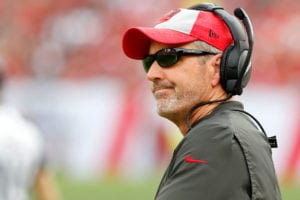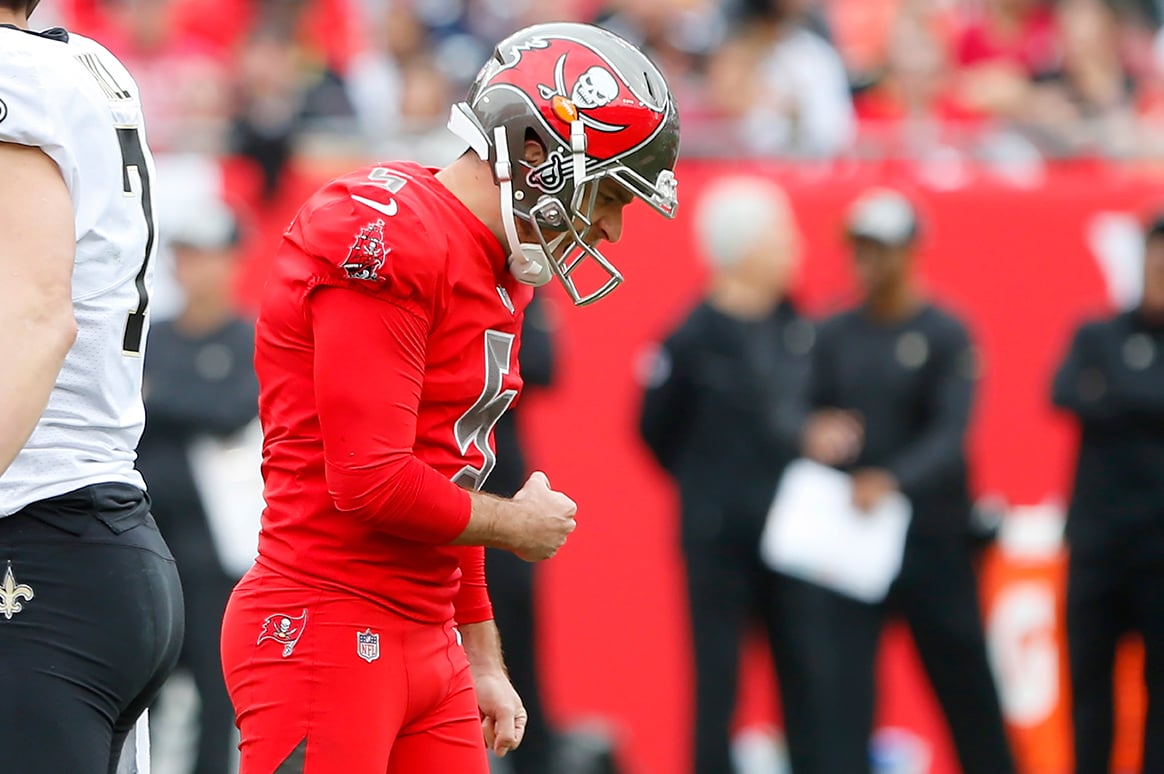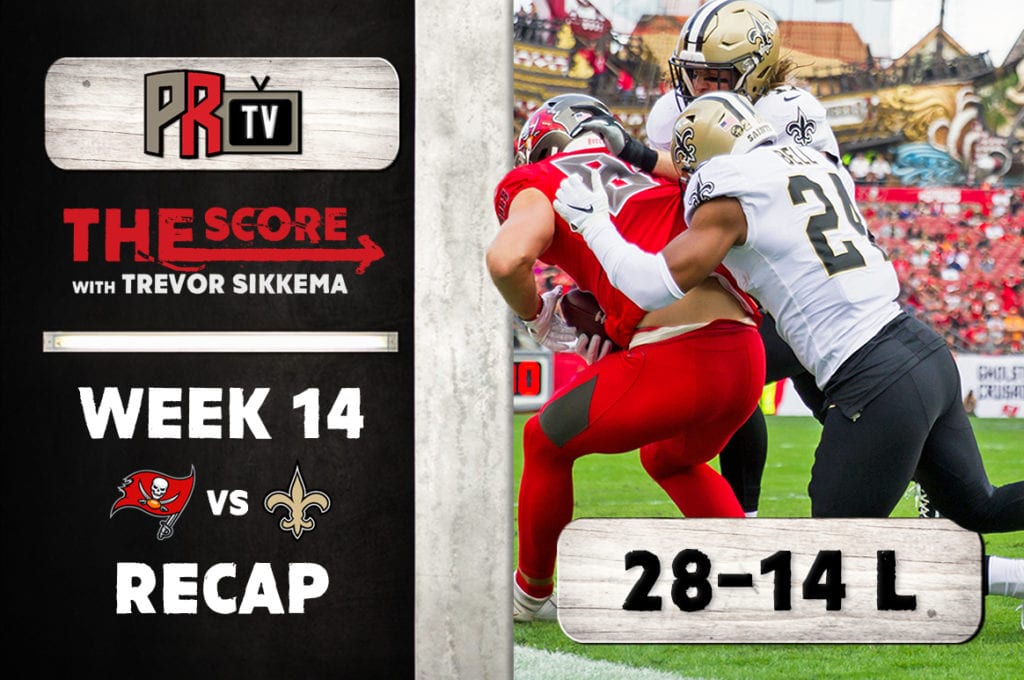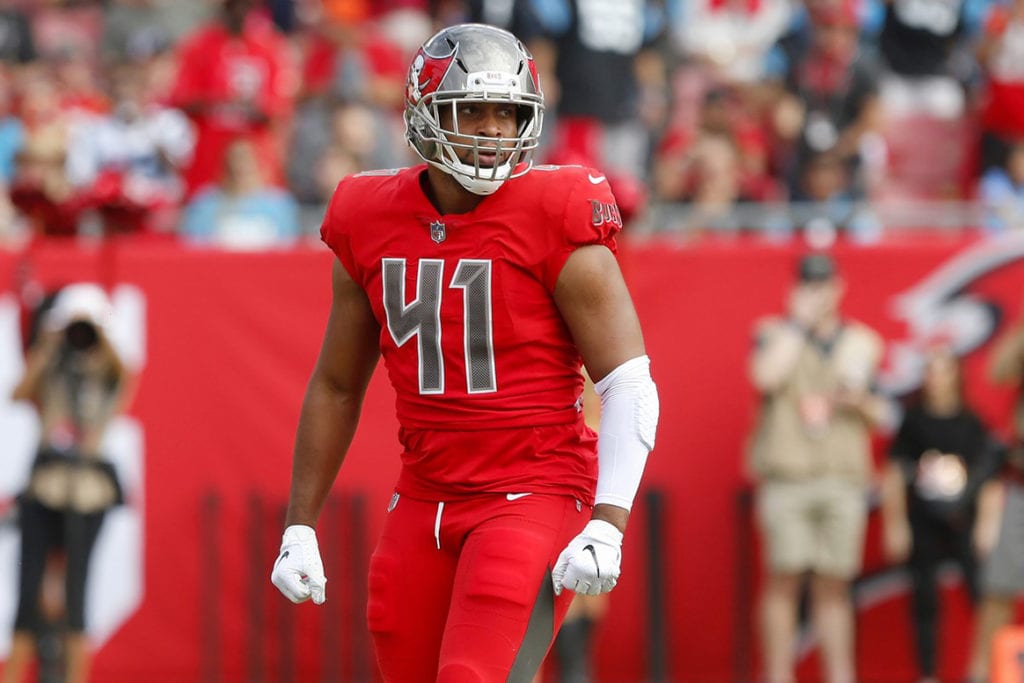All-Twenty Tuesday:
As I watched the game this Sunday, and in a culmination of what I’ve seen since the Week 3 lost to the Steelers, I was confused at some of the Bucs’ play-calling choices.
Thomas Bassinger of the Tampa Bay Times shared in my confusion.
“Entering Sunday, the New Orleans pass defense was one of the NFL’s most vulnerable on first down. Instead of exploiting that weakness, Tampa Bay committed to a run-pass balance. Over the first three quarters, Winston dropped back to pass on first down 13 times and handed off nine times. Bucs running backs gained 34 yards on those carries, an average of 3.7 yards. Winston’s passes averaged 4.5 yards — disappointing, to be sure, but no less efficient than the team’s run game.
It’s no coincidence that Winston faced 10 third-and-long situations (8 or more yards to go). And the Saints’ four sacks? Yep, they got three of them on third and long.
In the end, by playing not to lose, Tampa Bay lost anyway — the game and the season.”
Let’s dig into that shall we?
The Bucs’ first drive was flawless. It was pass-centric, no matter the down, they stayed aggressive as they gained yards, they took their deep shot, and they were able to bully the Saints all the way to the end zone for the touchdown.
The second drive was fine, but it did have a little wrinkle I wasn’t the biggest fan of.
I know that Bassinger’s stats cite passing on first down to be the move, and the Bucs did a decent job of that in the first two drives. But the next step in the commitment to passing on first down is that if you pass it and don’t get it, don’t run the ball on 2nd & 10. That just doesn’t make any sense.
Think of it this way. The Buccaneers are averaging just under four yards per carry. If you run the ball on 2nd & 10, on average you’re going to give yourself third-and-6, likely worse since that rushing average takes into account breakaway runs. But you know what third-and-6 is? It’s basically third-and-long!
Why would you waste a down just to set yourself up in third-and-long?
Running the ball on second-and-10 is just asking to be putting yourself in a hole on third down.
Tampa Bay did this before one of its field goals, too. On the first Cairo Santos miss, the Bucs passed the ball on first-and-10 on the 22-yard line. Then, after the incompletion, they ran the ball on second-and-10 for two yards. Why? Thinking “Well, we have the field goal” seems silly to me. That’s acting like anything in football is guaranteed.
On the next play, Jameis Winston took a sack. That backed them up, and Santos missed his field goal off the upright. If you throw the ball on second down, either you get it, you get more yards, or if you take the sack then, you have another down to make up for it.
I didn’t understand the mentality to run on second-and-10 the way the Bucs did on Sunday.
Now I want to go over the Bucs’ last three drives of the game and see where things went wrong.
In the drive above, they were still winning the game 14-11. On the first play, it was a pass play, which was good, but the route design was not built to be a man beater. Winston’s two primary reads ended up just running next to each other fully covered and he couldn’t even get the ball away.
On the second play they ran a toss run play to the outside that they should throw out of their playbook forever.
On the third play the offensive line was overwhelmed and they had no chance to get the ball to where it needed to go. A disaster of a series.
On the first play on the next drive, now down 18-14 with the Saints scoring on both of their last two possessions, the Bucs chose to run the ball on first down for a reason I have to assume was to get themselves some space between their backs and the end zone.
On the next play, Tampa Bay went five-wide, but again, New Orleans’ coverage played the Bucs’ play call very tight and the receivers weren’t able to get separation. It just seemed like the Saints’ defense was winning the head games of which defense to call versus which play designs to call. The Bucs just couldn’t get separation.
On the third play, Winston had Adam Humphries over the middle, but he overshot him.
On the Bucs’ last drive before their interception drive, they were now down 25-14 on the scoreboard in the fourth quarter. With now a double-digit lead, the Saints defense began playing in more of a “prevent” mentality. So on the first play, you see some check downs open up. Winston took them and got his five yards on first down, which was the right thing to do.
On the second play the Bucs actually did a nice job of calling a man-beater play and manipulated the Saints’ defense with spacing, getting Mike Evans open against the Cover 3 shell. Though the Saints do stay aggressive, that doesn’t always mean it’s in tight man coverage.
Cover 3 is still considered a more aggressive form of defense, but even when they go three-deep zone on the outsides, they’ll still go man coverage with their nickel players. That’s what the Bucs anticipated, and so they ran the nickel man out of the throwing window with Humphries’ shorter route to the sideline which opened up Evans’ curl route versus off-coverage Cover 3.
The third play was tough. On the third play it was Cover 2 man, meaning it was man coverage on the outside with two deep safeties to help. The play had two vertical routes on the outside, which couldn’t be thrown due to the coverage, and the man coverage on the inside took away both of the inside routes with Cameron Brate and Humphries. No space or separation for Winston to throw to.

Bucs head coach Dirk Koetter – Photo by: Cliff Welch/PewterReport.com
On the fourth play the Saints went back to Cover 3. I’m not sure if the Bucs thought the Saints would continue to play in more of a prevent zone and got caught off guard when they didn’t or what, but the Bucs receivers just could not separate at all in this drive. There was nowhere to throw the ball again.
On the last play, the Saints went into full zone coverage in their Cover 3 shell to guard the Bucs from reaching the first down marker. It worked. None of the routes they called that were to or beyond the sticks ever came open, and Winston ended up getting pressured before the routes could develop anyways.
Overall, when Koetter said that the offense hadn’t been shut down like that in a long time he meant it. The main culprits were that the wide receivers couldn’t separate and the offensive line couldn’t block long enough. That will never win you football games.
It’s hard to believe the Saints were 25 unanswered points better than the Buccaneers were in the second half, but they were. They just couldn’t execute a thing.
Trevor Sikkema is the Tampa Bay Buccaneers beat reporter and NFL Draft analyst for PewterReport.com. Sikkema, an alumnus of the University of Florida, has covered both college and professional football for much of his career. As a native of the Sunshine State, when he's not buried in social media, Sikkema can be found out and active, attempting to be the best athlete he never was. Sikkema can be reached at: [email protected]




